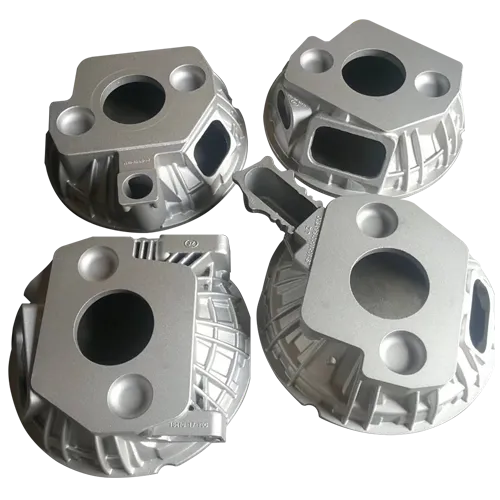Mobile:+86-311-808-126-83
Email:info@ydcastings.com
lower engine oil pan
Understanding the Lower Engine Oil Pan Importance, Function, and Maintenance
The lower engine oil pan, commonly referred to simply as the oil pan, is a critical component of an internal combustion engine. It serves multiple purposes that are vital for the engine's performance and longevity. Understanding what the oil pan does, how it functions, and the importance of its maintenance can help car owners make informed decisions about their vehicle's care.
What is the Lower Engine Oil Pan?
The oil pan is a metal or composite reservoir located at the bottom of an internal combustion engine. It is connected to the engine block and serves as the storage location for engine oil, which is crucial for lubrication, cooling, and cleaning engine components. The oil pan is typically shaped like a shallow container to accommodate the volume of oil required for proper engine function.
Functions of the Oil Pan
1. Oil Reservoir The primary function of the lower engine oil pan is to hold the engine oil. This oil is constantly circulated throughout the engine to reduce friction between moving parts, ensuring smooth operation and preventing wear and tear.
2. Heat Dissipation The oil pan also plays a role in dissipating heat. As engine oil circulates, it absorbs heat generated by engine components. The larger surface area of the oil pan allows for better heat dissipation, keeping the oil at an optimal temperature.
3. Oil Pickup Tube Inside the oil pan, there is an oil pickup tube that draws oil from the pan to the engine’s oil pump. The oil pump then circulates the oil throughout the engine, ensuring every component receives adequate lubrication.
4. Cleaning Action When engine oil circulates, it also picks up contaminants, such as dirt, metal particles, and sludge. The design of the oil pan allows for these contaminants to settle at the bottom, helping to keep the engine cleaner.
5. Sealing The oil pan is sealed with a gasket to prevent leaks. A proper seal is essential, as any leakage can lead to low oil levels, which can cause severe engine damage.
Common Issues with Oil Pans
Despite its robust design, the lower engine oil pan can encounter several issues over time
.lower engine oil pan

1. Leaks Oil leaks are one of the most common problems associated with oil pans. Over time, the gasket can wear out, or the pan itself can develop cracks, leading to oil loss. This not only compromises lubrication but can also lead to costly repairs if not addressed promptly.
2. Corrosion For vehicles that are frequently exposed to salt or harsh environmental conditions, the oil pan may be susceptible to corrosion. Regular inspections can help identify corrosion before it becomes a major issue.
3. Damage from Road Debris The oil pan hangs low on the vehicle, making it susceptible to damage from road debris or obstacles. A dent or crack can lead to leaks and loss of oil pressure.
Maintenance Tips
Maintaining the lower engine oil pan is vital to ensure the engine operates efficiently. Here are some helpful tips
- Regular Oil Changes Adhering to the manufacturer’s recommended oil change intervals helps maintain oil quality and cleanliness, reducing the chances of sludge buildup.
- Inspect for Leaks Regularly check for signs of oil leaks under your vehicle. If you notice any oil stains on your driveway or garage floor, have a mechanic inspect the oil pan and related components.
- Check Oil Level Frequently check your engine oil level using the dipstick. Maintaining proper oil levels is crucial for engine health.
- Avoid Obstacles As much as possible, avoid driving over obstacles that could damage the oil pan. If you frequently navigate rough terrain, consider installing protective covers.
Conclusion
The lower engine oil pan is an essential component of an internal combustion engine that plays a critical role in lubrication, cooling, and cleanliness. Understanding its functions and potential issues can help car owners maintain their vehicles better. Regular maintenance, timely inspections, and proactive care will go a long way in extending the life of both the oil pan and the engine.
-
Why Should You Invest in Superior Pump Castings for Your Equipment?NewsJun.09,2025
-
Unlock Performance Potential with Stainless Impellers and Aluminum End CapsNewsJun.09,2025
-
Revolutionize Your Machinery with Superior Cast Iron and Aluminum ComponentsNewsJun.09,2025
-
Revolutionize Fluid Dynamics with Premium Pump ComponentsNewsJun.09,2025
-
Optimizing Industrial Systems with Essential Valve ComponentsNewsJun.09,2025
-
Elevate Grid Efficiency with High-Precision Power CastingsNewsJun.09,2025











